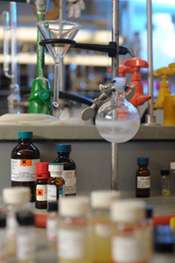Chemists shed new light on antibiotics and the survival of bacteria

(PhysOrg.com) -- Research in the laboratory of Shahriar Mobashery in the University of Notre Dame’s Department of Chemistry and Biochemistry has led to further understanding of how a bacterial cell wall cross-links, an event that penicillin and other antibiotics disrupt, a step in the maturation of a cell wall that is critical for the survival of bacteria.
Mobashery is the Navari Family Chair in Life Sciences at Notre Dame. His group published the findings recently in the Journal of the American Chemical Society in an article titled, “A Computational Evaluation of the Mechanism of Penicillin-Binding Protein-Catalyzed Cross-Linking of the Bacterial Cell Wall.”
This very process is the step in maturation of a cell wall that penicillin and other members of the ß-lactam class of antibiotics, the most commonly used antibacterial agents, interfere with. Scientists since the 1940s have worked to explain the antibiotic properties of penicillin, and research had shown that the drug interferes with the cell wall cross-linking, one of the final steps in the maturation of the cell wall. The interference by penicillin leads to points of weakness in the cell wall. Since bacteria cannot regulate their internal osmotic pressure, the action of the drug on the cell wall leads to bacterial death by bursting of the cell.
Five years ago, Mobashery’s lab determined the solution structure of the building units of the cell wall, also known as the peptidoglycan. This solution structure for the peptidoglycan was used in the present study in conjunction with a crystal structure determined by a French group for a transpeptidase, the enzyme that catalyzes the cross-linking reaction. The new research shows how the enzyme unites two fragments of the peptidoglycan in the critical cross-linking reaction of the cell wall.
“The current paper addresses the physiological function of the enzyme that penicillin inhibits,” Mobashery said. “It opens up opportunities to rethink the process of inhibition. You have the knowledge of how the cell wall cross-linking takes place and you can now mimic it. It has shed light on what I would consider to be a marvel of nature.”
Mobashery has a recent NIH grant for five years to study the maturation of the bacterial cell wall, building on the discoveries in the article and other research that is ongoing in his lab. The mature cross-linked cell wall is a single molecule, the largest molecule in bacteria, larger than the bacterial chromosome. Since it is known that a single bacterium contains tens of thousands of these cross-links and that the reaction is the step inhibited by penicillin, the present study illuminates an important aspect of bacterial physiology.
More information: A Computational Evaluation of the Mechanism of Penicillin-Binding Protein-Catalyzed Cross-Linking of the Bacterial Cell Wall, J. Am. Chem. Soc., 2011, 133 (14), pp 5274–5283. DOI: 10.1021/ja1074739
Abstract
Penicillin-binding protein 1b (PBP 1b) of the Gram-positive bacterium Streptococcus pneumoniae catalyzes the cross-linking of adjacent peptidoglycan strands, as a critical event in the biosynthesis of its cell wall. This enzyme is representative of the biosynthetic PBP structures of the β-lactam-recognizing enzyme superfamily and is the target of the β-lactam antibiotics. In the cross-linking reaction, the amide between the -d-Ala-d-Ala dipeptide at the terminus of a peptide stem acts as an acyl donor toward the ε-amino group of a lysine found on an adjacent stem. The mechanism of this transpeptidation was evaluated using explicit-solvent molecular dynamics simulations and ONIOM quantum mechanics/molecular mechanics calculations. Sequential acyl transfer occurs to, and then from, the active site serine. The resulting cross-link is predicted to have a cis-amide configuration. The ensuing and energetically favorable cis- to trans-amide isomerization, within the active site, may represent the key event driving product release to complete enzymatic turnover.
Provided by University of Notre Dame
















